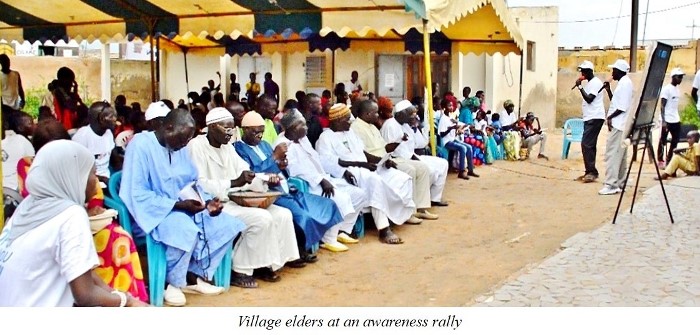News from Maison de la Gare
Portrait of Hope for Ending Begging by Talibé Children
Tweeter
Ndèye Diodio Calloga describes four years of progress in retaining talibé children in their home villages
Young talibé children roam the streets of Saint Louis all day long, reaching out their begging
pails or engaging in activities that can compromise their education, health, safety, and morals.
We began the European Union project in 2016 with a complete census of these begging street
children, hoping to have a major positive impact on this problem. And we did!
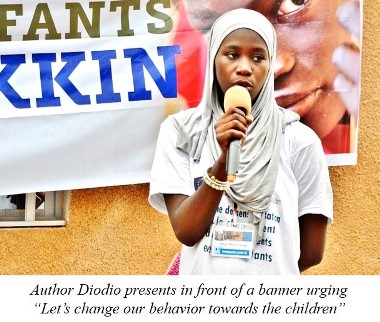 Two parts of
the project contributed to this: finding and reintegrating children living on the streets,
the
subject of our last report; and awareness campaigns in the towns and villages that the
children come from.
Two parts of
the project contributed to this: finding and reintegrating children living on the streets,
the
subject of our last report; and awareness campaigns in the towns and villages that the
children come from.
Awareness campaigns in the home communities of the talibé children have proven to have enormous
impact. They provide an opportunity to meet the children’s families and to better understand
their living conditions and the reasons why they send their children to Saint-Louis.
We organized a total of eleven awareness campaigns throughout Senegal, with 41 sessions in
some twenty areas. The choice of locations was no accident – they were the major home
communities of Saint Louis talibés including the regions of Louga, Kaolack, Kaffrine, Kolda,
Matam, Podor, Tamba, Diourbel, Bambey and Saint Louis. Thousands of families continue to
send their young children to Saint Louis to learn the Koran, usually
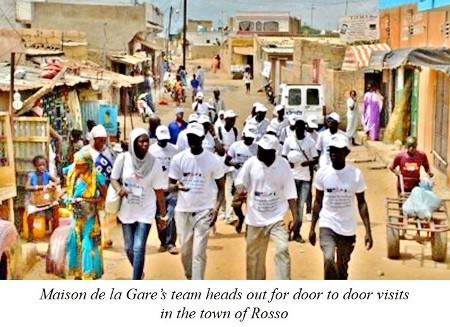 in total ignorance of
the fate that awaits them there. To make any progress at all in the struggle to end child
begging, we must make these families aware of the lives to which they are
condemning their children.
in total ignorance of
the fate that awaits them there. To make any progress at all in the struggle to end child
begging, we must make these families aware of the lives to which they are
condemning their children.
The awareness campaigns have had a huge impact. They allowed us to meet the families of the
children and to better understand their living conditions and the reasons why their families
send them to Saint Louis.
Our first and most striking observation was the rudimentary living conditions in the places
where families live. The home visits and the many discussions and exchanges revealed that
parents send their children to big cities so that they can have better living conditions, in
addition to receiving Koranic teaching. We were able to better understand the real reasons
for the flow of boys to large cities, and also why children returned
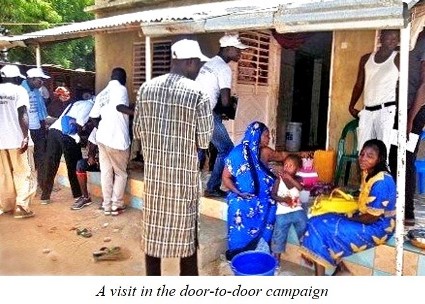 to their homes find it
difficult to stay and reintegrate. There are seldom any educational, leisure or professional
activities for them other than heavy farm work, which can be very demanding.
to their homes find it
difficult to stay and reintegrate. There are seldom any educational, leisure or professional
activities for them other than heavy farm work, which can be very demanding.
The awareness campaigns have also contributed greatly to the work of our night rounds team
in Saint Louis. It was often difficult to locate the families of talibé children found
living on the street, because of the resistance and often the refusal of their marabouts to
cooperate and to the vague memories of the children. The campaigns made it possible for us
to establish partnership relationships with AEMOs (local offices of the Ministry of Justice)
and with grassroots community organizations in all corners of Senegal. And, we established
monitoring committees in several areas. These relationships now provide enormous support
with family tracing, returns of children to their families, and above all in taking charge
of and monitoring children after their return home.
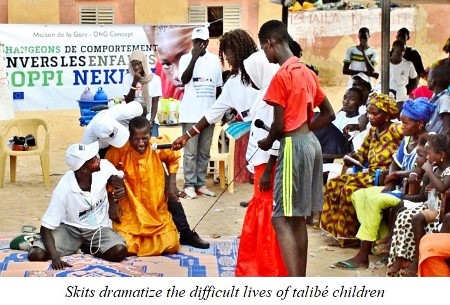
But, how can we measure whether any real change has resulted from these efforts? Are there
less begging talibé children in Saint-Louis? This was the purpose of the censuses that we
carried out in early 2016 and again in December 2019.
In the first census, we catalogued all the daaras in the commune of Saint Louis. The work
was carried out by a team of ten field investigators supported by five marabout-facilitators
and five supervisors. Over 95% of the marabouts responsible for the daaras collaborated in
providing census information. A total of 14,779 begging talibé children were
identified living in 197 daaras.
We worked closely with officials from each of the 33 neighborhoods in Saint Louis for the second
census of talibé children in December 2019. They were involved both
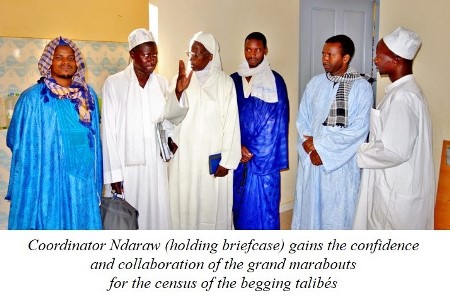 in initial information
campaigns and in the actual census. Our objective was to not only to obtain the data that we
needed, but also to help the officials to identify and establish relationships with the daaras
in their areas so that they can exercise some oversight over them. Accompanied by these
officials, our field investigators visited a total of 147 daaras and were able to identify a
total of 4,973 begging talibés.
in initial information
campaigns and in the actual census. Our objective was to not only to obtain the data that we
needed, but also to help the officials to identify and establish relationships with the daaras
in their areas so that they can exercise some oversight over them. Accompanied by these
officials, our field investigators visited a total of 147 daaras and were able to identify a
total of 4,973 begging talibés.
The sharp reduction in both the number of daaras and the number of begging talibés is a sure
sign of progress. With your help, we will never give up the struggle to end begging and
abuse of talibé children.
__________
This is the final of three reports presenting the dramatic advances for the begging talibé street
children that were made possible by a four-year grant from the European Union, from 2016 to 2019. We
are grateful for this invaluable support.
